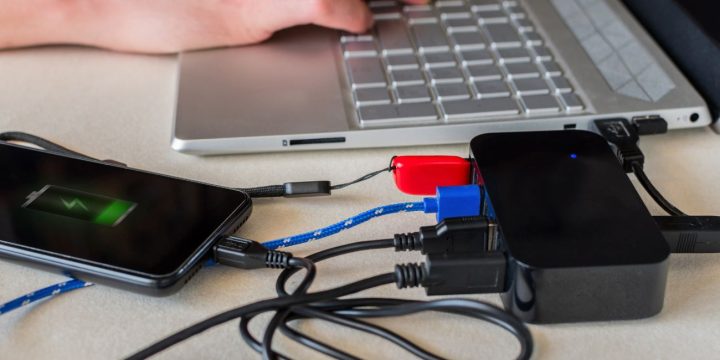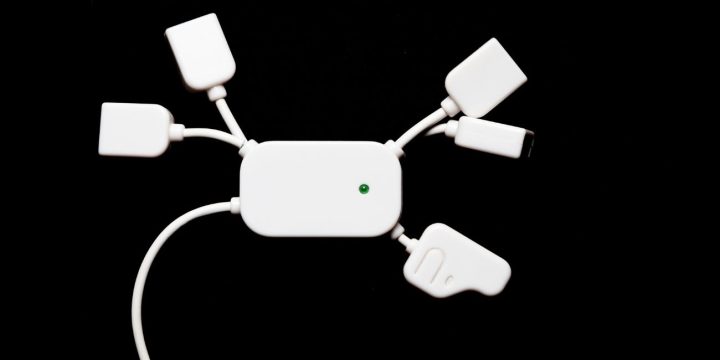When you run out of USB ports on your laptop or desktop, the first thought is often, “Should I get a USB splitter or a USB hub?” While both help expand connectivity, they work very differently. Choosing the wrong one can lead to slower performance, charging issues, or device detection failures.
This article explains what each device does, how they differ, and which is better based on your needs.
What Is a USB Splitter?

A USB splitter is a simple device that divides one USB port into two or more outputs. Think of it as a fundamental extension cable with multiple heads. It does not manage power or data independently. When you connect two devices through a splitter, they fight over the same bandwidth and power supply.
USB splitters are usually unpowered, relying entirely on the computer’s USB port for electricity. Because of this, they’re not ideal for connecting high-power or data-heavy devices. They might work for charging two small devices or running a low-power keyboard and mouse, but performance can be limited.
What Is a USB Hub?

A USB hub is a more innovative, more functional device. It connects to one USB port but includes internal circuitry that manages data transfer and power across multiple ports. There are two types:
- Passive hubs: draw power from the host computer, like splitters, but still handle data more efficiently.
- Powered (active) hubs: have their power supply, which means they can charge devices and power multiple peripherals without depending on your computer’s USB port.
Most USB hubs also support newer USB standards like USB 3.0 or 3.1, providing faster data speeds than the typical splitter.
What are the key differences between a splitter and a hub?
The most significant difference is functionality. Splitters divide the connection, while hubs manage it.
- Power Management: Hubs can distribute power evenly, primarily powered hubs. Splitters cannot.
- Data Handling: Hubs can connect multiple USB drives or devices with no data conflict. Splitters often cause connection failures when both devices demand data.
- Speed: A USB 3.0 hub gives each port high-speed data. A splitter forces all devices to share one signal line.
- Reliability: Hubs are built for multitasking. Splitters are not.
Which One Is Better for Charging?
If you need to charge multiple devices, a powered USB hub is the clear winner. It provides stable voltage and higher current to each port. A splitter, by contrast, will split the power in half (or more), making it inefficient and potentially dangerous for sensitive electronics.
For phones, tablets, or wireless accessories, choose a USB hub with dedicated charging ports.
Which One Is Better for Data Transfer?
A USB hub is always the better option for transferring files and using external hard drives, webcams, printers, or USB microphones. It prevents data conflicts, supports higher speeds (especially with USB 3.0+), and ensures stable connections.
A USB splitter will likely cause one or both devices to fail or be unrecognized if both try to send data at the same time.
Device Compatibility and Use Cases
USB hubs are compatible with almost all devices, including:
- Windows PCs and laptops
- macOS systems
- Linux
- Smart TVs
- Game consoles (PlayStation, Xbox)
- USB-C hubs (for newer laptops or phones)
USB splitters, on the other hand, are limited. They may work for charging or light input devices, but they often fail when handling multiple active connections.
Limitations and Risks
USB splitters are prone to problems:
- Devices not being detected
- Reduced charging speed
- No support for simultaneous data transfer
- Possible device disconnects
USB hubs, while better, can still be bottlenecked if too many high-speed devices are connected. It’s best to choose powered hubs for setups that include external drives, cameras, or other power-hungry accessories.
Final Verdict: Which Is Better?
In almost every case, a USB hub is better than a USB splitter. It’s more reliable, handles both power and data properly, and is compatible with more devices. A USB splitter is only useful for very basic tasks—like charging two low-power devices or connecting a mouse and keyboard.
If you want smooth performance and long-term stability, especially for multitasking, go with a powered USB hub that supports at least USB 3.0.
Have you used both a splitter and a hub? Share your experience in the comments and let others know which worked best for your setup!

